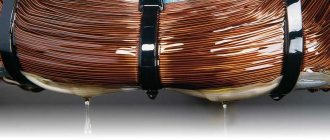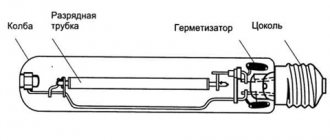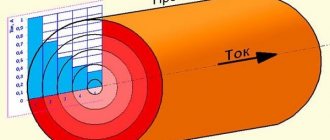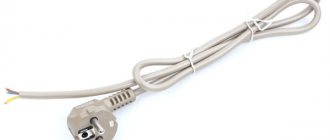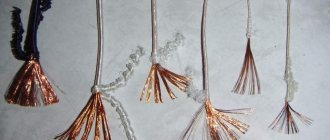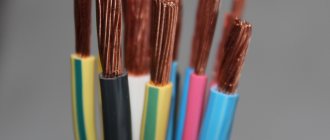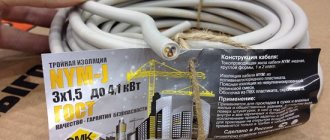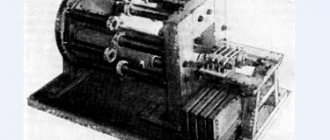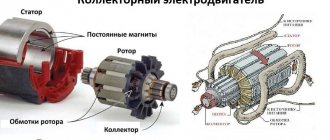Many schoolchildren and students do not like physics because of the large number of abstruse words and strange formulas. One of these mysterious topics is dielectrics. What is it, where is it used and why is it needed at all? Children cannot understand, and teachers do not properly explain important information. That is why today I, a physics teacher, want to help students and schoolchildren in studying dielectrics.
Dielectrics or insulators are substances that conduct little or no current. These include everything irreducible: air, gases, wood, glass, plastic and much more. They are used in many technologies and machines to limit the spread of current.
Let's take plastic for example. If we place a small piece in an electrified environment, we will notice an unusual phenomenon: it will begin to be attracted to positive or negative charges. But as soon as we turn off the field, everything will stop. The plastic will stop being attracted and will remain in place.
Actually, this experiment shows that insulators cannot transfer current, but are a kind of barrier for it that prevents it from spreading further. And even if electricity passes, it is in minimal, harmless quantities.
Sometimes there is very strong confusion with the properties of dielectrics. Many give them useless and impossible functions that have never been found in these materials, or, conversely, remove them. Now I will briefly and quickly tell you about all the properties of dielectrics.
Electrical dielectrics. What are they?
As we were taught in school, some substances conduct electricity poorly, while others conduct electricity well. For example, wood conducts very poorly, but aluminum conducts much better. So, if you remember the terminology, then substances that conduct electricity well are called conductors, and those that conduct it poorly are called... Well, what about them? Oh yes, they are called electrical dielectrics.
Of course, we are not saying that they do not conduct current at all, no. They are, of course, conductors, just comparatively rather poor ones. Dielectrics, on the other hand, are also substances that can store an electric field within themselves for quite a long time, and this will not require external energy.
Heat resistance classes of electrical insulating materials
The heat resistance class of dielectrics is indicated by a letter of the Latin alphabet. We list the main ones:
- Y – maximum temperature 90 degrees. Celsius. This category includes various fiber products made from cotton, natural fabrics and cellulose. They are not impregnated or supplemented with liquid electrical insulators.
- A – 105 deg. Celsius. All materials listed above and synthetic silk are impregnated with liquid dielectrics (immersed in them).
- E – 120 degrees. Celsius. Synthetic products including fibres, films and compounds.
- B – 130 degrees. Celsius. Mica dielectrics, asbestos and fiberglass, coupled with an organic binder and impregnation.
- F – 155 degrees. Celsius. Mica materials, the connecting link of which is synthetic components.
- H – 180 deg. Celsius. Mica dielectrics with organosilicon compounds acting as a binder.
- C – more than 180 degrees. Celsius. All products listed above that do not use a binder or use inorganic adhesives.
The choice of electrical insulating materials depends not only on the capacity of the equipment, but also on its operating conditions. For example, for high-voltage power lines, dielectrics with increased frost resistance and protection from ultraviolet rays must be used.
Therefore, the information above should be used for informational purposes only and the final decision should be made by a professional, qualified professional.
What happens if you influence from the outside?
If you apply an external electric field to an electric dielectric, then the free charges of the dielectric will begin to gradually neutralize it. Moreover, this will happen until the electrons run out or the resulting field becomes zero.
To understand what substances can generally interact with electric fields, we need to understand a term such as electrical conductivity. In simple terms, in order to interact with an electric field, a substance must have a fairly low electrical conductivity.
To be more precise, the resistivity should be comparable to 1010 Q-cm or even greatly exceed this value.
Where does low electrical conductivity come from?
As we know from the basic physics curriculum, all substances are made of atoms. And these atoms interact very actively with each other. Each of them has its own charge, and thanks to the charges, the atoms interact in one way or another.
However, how is such low electrical conductivity created? It seems that there are atoms, they somehow interact there and current could flow through them, but not everything is so simple. The key to ensuring that the conductivity of a substance is low is a very important fact.
If, when a field is applied, electrons, ions and other particles cannot move freely or do so very poorly, then the electrical conductivity will be low, because everything will stand in its place and free electrons will simply have nowhere to go.
The crystal grid will help you figure it out
Now the crystal lattice will help us understand electrical dielectrics. So that the terms do not seem incomprehensible to us, let's refresh them in our heads. A crystal lattice is a group of points that are formed in substances (more precisely, in crystals) under the influence of shifts (they, by the way, can occur due to the influence of an electric field. Great, we remembered. Now let's figure it out.
As we remember, in an atom that is currently isolated, the energy of electrons cannot take on any values. In this state, the energy will take on clearly designated values W1, W2, W3, etc. Here, take a look at the graph:
Of course, each of these levels will be slightly shifted after the atoms become part of the solid crystal lattice. As a result, the zone in which all energy will be concentrated will be common to the entire lattice.
So, in a crystal lattice, the energy of electrons lies within well-defined zones and all values that are outside this zone are prohibited. We understood this. Let's move on. According to the Pauli principle, each band can accommodate a limited number of electrons. First, electrons will fill the lower levels, and when these rows are completely filled, they will fill the upper rows.
And now the key idea that you need to understand in order to understand why certain substances conduct electric current. Since electrons gradually fill the rows from bottom to top, then at the topmost row they will either fill this row completely or only partially.
So, when the row is partially filled, electrons will be able to move freely along it, which means they will conduct current. Bingo! But if electrons do fill the upper level, then under the influence of an electric field no shifts will occur and, accordingly, such a substance can be called a dielectric.
A very similar situation occurs with amorphous solids (for example, amber or polyethylene). By definition, in such substances the arrangement of atoms is very random, and zones common to the entire crystal simply cannot exist, which means they are also electrical dielectrics.
Mica
Mineral of crystalline structure. Due to its structure, mica easily splits into individual leaves. It has high electrical strength (80 – 200 kV/mm), high heat resistance, moisture resistance, mechanical strength and flexibility. In electrical engineering, two types of mica are used: muscovite and phlogopite, which differ in composition, color and properties. The best mica is muscovite. Rectangular plates for capacitors, washers for electrical devices, and the like are stamped from mica sheets. However, more often individual mica sheets are glued together using adhesive varnishes (glypthal, bitumen-oil, shellac and others). This material is called micanite. Micanites are distinguished: collector (for insulating collector plates), spacer (for insulating washers, gaskets), molding (pressed when heated to make shaped parts), flexible (for interturn and slot insulation of electrical machines), heat-resistant (for electric heating devices). Sometimes mica plates are glued to paper or fabric (micalente, micafolia, steklomicafolium).
Ions
Exactly, in addition to electrons, there are also ions, and they can also affect the final situation.
Their thermal motion consists of them oscillating somewhere around an equilibrium position. However, the interesting thing is that some of them are still able to break free and overcome what is holding them back. Such ions can be conventionally called free. They move to places where their potential energy will be very low. If we are talking about electrical dielectrics (and we are still talking about them), then such places in a dense crystal lattice for them are nodes.
So, according to Walter Schottky’s theory, this can only happen when a certain number of lattice sites are already occupied by ions. In physics, such nodes are often called “holes.” Then thermal motion will be reduced to a random jumping of ions from one site to another.
Dielectric once and for all?
When we call this or that substance a dielectric, we must understand that this name is rather arbitrary, because under a certain influence on the substance it can already lose the properties of a dielectric. Why is this happening?
The fact is that electric current affects the substance only for a very short period of time, which is why the field in it also does not appear for long. Therefore, even substances with very low resistivity can also be considered a dielectric under certain conditions.
A good example would be distilled water. But if the voltage affects the substance for a very long time, then it can already be safely called a conductor. This is such magic.
Capacitors.
Dielectrics are widely used in capacitors. Capacitors have a variety of uses, including storing electrical charge, neutralizing the effects of inductance in AC circuits, and generating current pulses for a variety of applications. The capacitance of a capacitor can often be calculated from the system configuration or measured by determining the amount of charge on one of the capacitor plates when a given voltage is applied between the plates. The energy of a charged capacitor is 1/2 CE2 and is expressed in microjoules (µJ) if C is expressed in microfarads (µF) and E in volts (V).
Amorphous dielectrics. What are they?
What is special about amorphous dielectrics? The main thing that distinguishes them from others is their rather loose structure, which means there are a lot of voids inside and a large space where the ions can be in a state of equilibrium. Moreover, during the transition from one equilibrium state to another, the energy consumed by the ion will always be different. In some transitions, the ion will not be completely freed from the forces restraining it, so it can be conditionally characterized as half-bound by these forces.
Such transitions will consume a very small amount of energy, and the ion can move only a very short distance during such transitions. As a result of thermal movement, such transitions inside amorphous bodies will occur much more often, because they require much less energy than others.
However, a small number of ions that contain large reserves of energy will still be able to overcome the forces that bind them and will move over relatively long distances.
If we draw an analogy with a crystal lattice, then these ions can be called free. As we have now found out, in general, this situation during the movement of ions in amorphous bodies is identical to solid ones, but with minor reservations.
Place it in a permanent field
Now let's move a little away from what substances can be dielectrics and what cannot be, especially since we have already understood this issue quite well.
Let's now try to answer this interesting question: what will happen if a dielectric is placed in a constant electric field? First, let's give a short answer, and then we will look at this issue in more detail. So, if you place a dielectric in an electric field, then the charges of the dielectric of which it consists will be under the influence of certain forces, which will be:
- displace bound charges (these are only electrons and ions)
- impose a field on the random movement of heat, which will order this movement (positive charges will go in one direction with the field, and negative charges in the opposite direction)
What will orderly movement provide?
When ordering dielectric charges, there are two possible scenarios:
- a new equilibrium state with a different distribution of charges, and the movement immediately stops when equilibrium is reached
- While the field is in effect, ordering can continue as long as there are still free electrons or free ions in it, which we talked about above
Let's talk about polarization
The next important term that it’s time to learn about is the polarization of dielectrics. The fact is that the processes of displacement of dielectric charges occur at different speeds. As we said earlier, for bound charges the displacement time is much shorter, but other processes proceed very slowly.
When the dielectric charges are displaced, another field is formed. It just makes the main (external) field weaker. It is precisely the phenomenon of the formation of a new field that is called polarization of the dielectric. Now let's delve into this process, because there are a lot of interesting details.
First, let's understand why a new field appears at an offset. Everything is simple here, because now from a disordered state the dielectric becomes more ordered - the negative charges are now located to the left of their positive charges. This is precisely what creates a new field.
Dielectric permeability
But how can we measure how much the internal field weakens the external one? Well, everything is very simple here. This measure is called electrical permeability or dielectric permeability (you've probably already heard this term). They usually say that the permeability of a dielectric is constant, but in fact, due to the fact that polarization takes quite a long time, we will say that this value depends on the time of action of the external field.
How does temperature affect the permeability of a dielectric?
But is it only time that affects electrical conductivity? It turns out that not only. It turns out that if you increase the temperature, then at the same time the intensity of thermal movement also increases, and this, as you understand, directly affects the permeability of the dielectric. Why? It's simple: the transition to a stable state becomes more difficult, and therefore the dielectric constant becomes less and less with increasing temperature.
Rubber
Rubber is obtained from the sap of rubber plants. Such rubber is called natural rubber (NR). Rubber can also be obtained artificially. Artificial or synthetic rubber (SR) is made from alcohol or petroleum products. Rubber heated to 50 °C softens and becomes sticky, and at low temperatures it becomes brittle. Rubber is highly soluble in hydrocarbons and carbon disulfide. To increase mechanical strength, heat and frost resistance, and resistance to solvents, 3–10% sulfur is added to the rubber. This process is called vulcanization, resulting in rubber. In electrical engineering, rubber is used to insulate installation and installation wires and cables of certain designs, for insulating tubes, protective gloves, galoshes, rugs, and the like. Rubber has high electrical insulating properties, moisture resistance, impermeability to water and gases, has low heat resistance (when heated above 60 - 75 ° C, rubber becomes brittle and cracks), when exposed to petroleum oils, it swells, and when exposed to light, it ages. Electrical strength of rubber 24 kV/mm; ε = 2.5 – 3.
Dielectric breakdown
Remember, in this article we already said that each dielectric has its own limit and that a substance cannot be unambiguously called a dielectric and must be considered in dynamics. So, let's return to this topic and go a little deeper into it. Do you know what happens during polarization?
The fact is that with this phenomenon, a state begins, called stationary or quasi-stationary, if the influence of voltage from the outside is variable. This state differs from the usual one in that the polarization values can remain at the same level for a very long time. Together with them, electrical conductivity also stabilizes.
If you immediately begin to increase the tension in such a field, then it will be possible to very accurately determine the limit at which this very stability will be sharply violated. The current and electrical conductivity will immediately increase, and this is a direct path from the dielectric to the conductors. Indeed, after this the substance can no longer be characterized as a dielectric. This process of transition of a dielectric into conductors is called dielectric breakdown.
Now that we have understood what breakdown is, let us now understand how we can easily determine at what point dielectric breakdown occurs. As we can understand, the breakdown time threshold may depend on temperature, the state of aggregation of the substance and many other factors; something else is important here. Let's look at the main cases of breakdown, there are only two of them, so don't be alarmed:
- thermal phenomena in which an increase in electrical conductivity is caused by the fact that the dielectric heats up very quickly, due to which the thermal state can no longer be stationary
- electrical phenomena that occur due to an increase in the number of free electrons and ions. This also happens in two cases. Either the appearance of free charges is due to their being knocked down by other moving charges, or due to being knocked down by a field.
Glass
It is obtained by melting silica - SiO2 (in the form of sand) with oxides of various metals - sodium, potassium, lead, calcium (in the form of soda, saltpeter, borax, various rocks). Glass is an amorphous body, so it does not have a specific melting point. When heated, glass softens and becomes liquid. In this state, glass can be blown, drawn, pressed, or cast. The physical and mechanical properties of glass depend on its composition and processing. If ordinary glass is fragile, then especially tempered glass - stalinite - has high impact strength. Glass is practically waterproof; it is not affected by acids (except for hydrofluoric acid) and alkali. However, glasses containing only alkali oxides (Na2O, K2O) dissolve well in water (liquid glass). The electrical insulating properties of glass are very high. As glass heats up, it quickly loses its insulating properties. In electrical engineering, glass is used to make cylinders for lighting and electronic lamps, insulators, and the like. Glass can be used to produce fibers with a diameter of up to 0.005 - 0.006 mm. The individual fibers are spun into threads. Glass threads (glass yarn) are used for heat-resistant insulation of PSD grade conductors. Electric strength of glass 10 – 40 kV/mm; ε = 5.5 – 10.
Field in a dielectric
As we already understood, the field in the dielectric is directed exactly opposite the external electric field. But this knowledge is not enough for us to have a good understanding of dielectrics.
So let's delve a little deeper into this topic. Let us recall that the polarization of a dielectric is when the charges are redirected so that the minuses face one way and the pluses face the other. So, let's look at the types of polarization.
Deformation (or electronic)
This type of polarization interests us most. It is worth noting that such polarization is typical for substances consisting of non-polar molecules, that is, which do not have dipole moments. What's happening? It's simple - the main thing you need to understand is that the electron shells shift. In this case, positively charged atomic nuclei are displaced towards the external field, and negatively charged electron shells are shifted against the field.
Dipole (or orientation)
This is one of the most common types of polarization. However, here everything is exactly the opposite. Here the orientation of the dipoles is already changing. It’s still simple here - when the field from outside does not affect the substance, the order of the dipoles is absolutely chaotic, but when the external field begins to influence the substance, then absolutely all dipoles turn with their positive side towards the field that influences it. As we have already discussed above, the stability of the position of the dipoles is determined by the field strength and temperature of the substance.
Ionic
Yes, we haven’t forgotten this type of polarization either. Here we are talking about the displacement of the positive lattice of ions. They will be located along the field, and negative ones - against.
So why did we say at the very beginning that we would be most interested in the first type of polarization if we consider positive charges? It's simple. Positive charges play some role only under such an influence of an external field on a substance. Therefore, you can assume that you already know everything you need to know about them.
Low voltage capacitors.
For low current and low voltage applications, such as radio and telephone networks and low voltage rectifiers, capacitors are typically made from layers of aluminum or other metal foil separated by a dielectric of one or more layers of waxed paper. Very compact low-voltage capacitor - so-called. electrolytic - made by applying (by electrolytic deposition) a thin insulating oxide film to the surface of a metal foil; in this case, a sufficiently high capacitance per unit surface area of the capacitor is achieved. The resulting material is wound in the form of a winding of compact dimensions.
Flat dielectric
For some reason, many people sometimes call the dielectric inside a flat-plate capacitor. Perhaps it’s just more convenient to call it that way. In fact, a flat capacitor is a very interesting device, so let's talk about it and its dielectric (flat dielectric for that matter).
Since we are talking about a capacitor, let's immediately learn how to determine its capacitance (or the capacitance of a dielectric). To do this, let's use this wonderful formula:
Let's understand what each of the letters means here. S is obviously the area of the plates of a given parallel-plate capacitor. The letter d denotes the distance between the plates, and the other two variables are the dielectric constant of the dielectric (planar dielectric) and the electrical constant (in case some of you have forgotten, 8.854 pF/m)
It’s strange, but now flat capacitors are very rare. This may be due to film technology, which is so microscopic that it is quite difficult and expensive to make.
Why can’t a flat capacitor and a dielectric live without each other?
The answer to this question is not that complicated. The thing is that the most important and basic element in a flat capacitor—its capacitance—depends on the dielectric. Let's talk about how it works. As we know, an amorphous substance consists of dipoles, which, in turn, are fixed in place and randomly oriented.
When an external field acts on this most amorphous substance, the dipoles unfold along the lines of force of this external field. At the same time, the field weakens, and the charge gradually accumulates until the field ceases to act. And so it goes on cycle after cycle. That is why a flat capacitor with a dielectric can only be considered together.
How not to confuse conductors and dielectrics
Before this, we looked at dielectrics in great detail, learned how they work, how they are structured inside. Now let's find out how they are used in real life and how not to confuse them with conductors.
Where are dielectrics used?
Dielectrics are used in many areas of life, namely in those where electric current is needed.
They are especially actively used in agriculture, industry and instrument making.
Solid dielectrics
Dielectrics are different. For example, solid dielectrics can ensure the safety of devices that run on electricity. They are good current insulators, which means they greatly influence the durability of these devices. One example is dielectric gloves.
Liquid dielectrics
But liquid dielectrics are needed for a slightly different purpose. They are used in capacitors, cables, air-circulating cooling systems and many other devices.
Isolation Options
The main ones include:
- electrical strength;
- electrical resistivity;
- relative permeability;
- dielectric loss angle.
When assessing the quality and efficiency of dielectrics, and comparing their properties, it is necessary to identify the dependence of the listed parameters on the values of current and voltage. Compared to conductors, electrical insulating components have increased electrical strength. Considering the above, no less important is how well the insulators retain their useful properties and specific values when heated, increased voltage and other influences.
